
Scotch, smokes, pills, and women—fuel for the sophisticated, amusing and urbane stories of Henry Kane.
Henry Kane’s pretty much forgotten these days, with all his work out of print. You can Google him, as I did, and you’ll unearth a great deal of information that way, some of it true. And you can find copies of his books on eBay and Amazon and other used-book sources. He wrote over 60 novels, and while none of them hit any bestseller lists, there were enough copies printed so that some survive.
He was born in 1918, earned a law degree, but if he ever practiced the profession he gave it up when he found he could make a living with a typewriter. He wrote a great deal over the years for radio and television, and probably created the series Martin Kane, Private Eye, which had a good run on both media. The Blake Edwards TV show, Peter Gunn, was clearly inspired by Kane’s series of books about one Peter Chambers, though Kane never got any official credit.
I read his stories in Manhunt, and his books, when I began trying to write crime fiction of my own. In the first or the third person, Kane wrote with no apparent effort and produced narrative that was sophisticated, amusing, and urbane. I haven’t read anything of his in ages, and the books I once owned have long since moved on to other owners, but I remember having enjoyed them all.
I came to know him through our mutual agent, another Henry—Henry Morrison. I spoke with Henry Morrison recently, and learned that it was at HK’s urging that HM opened up shop as an agent back in the mid-'60s.
HM had decided to part company with Scott Meredith, for whom he’d worked for almost ten years, and was planning to sign on as an editor at a paperback house. He said as much to Kane, who took him out to dinner and told him he was making a mistake and wasting years of great experience. He should open his own agency, Kane said, and that way he’d be doing what he was best suited to do, and working for himself, and would no doubt blossom as an excellent agent.
And would Kane go with him?
“No,” said Henry Kane. “Because you might not make it, and then where would I be? But set up on your own, and get yourself some clients, and if you’re still in business a year later, then I’ll go with you.”
And that’s what happened. Henry Morrison became a successful agent, and after a year Henry Kane became his client, and never left. I met Kane a couple of times when we were both visiting HM’s office to drop off a manuscript or pick up a check, and in the early ’70s we got to know each other. I was living on 22 acres outside of Lambertville, New Jersey, and had a fourth-floor walkup studio on West 35th Street between Fifth and Sixth Avenues that I used for writing and adultery. (I was far more successful at the former pursuit, and wrote several books there, including Ronald Rabbit Is a Dirty Old Man and Chip Harrison Scores Again.) Henry Kane lived on Long Island—Lido Beach, if memory serves—and spent Monday through Friday in an apartment on 34th Street west of Ninth Avenue.
I paid a few visits to his pied-à-terre, and had some good conversations. He took his work seriously, and insisted that each page be perfectly typed before he went on to the next one. He began the work day by swallowing a Dexamil capsule, and after a certain number of hours at the typewriter he’d pour himself a little Scotch to soften the edge of the speed. He’d sit there typing and chain-smoking and sipping Scotch until the day’s work was done, and then he’d go out for dinner and a night on the town.
 Uh, don’t try this at home.
Uh, don’t try this at home.
At one point, according to Kane, his wife began to worry that his lifestyle was going to kill him. She got him to go to a doctor, who put him through a thorough physical. When the results were in, the three sat down together, and Mrs. Kane waited for the doctor to put the fear of God into her husband.
“I understand you drink,” the doctor said.
“Scotch,” said Kane.
“How much?”
“About a quart a day. Sometimes more, if I make a night of it.”
“And you smoke cigarettes.”
“A couple of packs a day.”
“And you take Dexedrine.”
“As prescribed,” said Kane. “A pill every morning. Sometimes, but not often, a second pill as a sort of pick-me-up.”
The doctor looked thoughtful.
“Tell him,” said Kane’s wife. “Tell him what he’s doing to himself. Tell him he absolutely has to stop.”
“Ah,” said the doctor. “Well, Mr. Kane, I have to say you’re in perfect health. I wouldn’t recommend your regimen to anybody else, but it seems to be serving you well.”
That, at least, is how Kane recounted the incident to me, with enormous glee. I suspect what the doctor said was more along the lines of "Well, it hasn’t killed you yet"—but one hears what one wants to hear.
But I’ll say it again: Don’t try this at home.
There are two stories Henry Kane told me that have no bearing on his work, and are in no way instructive to young writers. But they’re the reason I chose him as the subject for this column—along with the fact that he was far too entertaining a writer and far too engaging a gentleman to be entirely forgotten.
Kane was in his early 50s when I got to know him, and some years previously his father had died. And ever since then, Kane had heard footsteps.
Not all the time, to be sure. But every now and then he would hear someone pacing the floor overhead, walking back and forth, back and forth. At first he’d thought there was in fact someone up there, but it even happened when he was on the top floor, or sitting home in an otherwise empty house. It became clear that he was hearing these footsteps, and there were no feet responsible.
He also discovered that other people didn’t hear them. He most often heard them when he was alone, but sometimes there would be other people present, and they couldn’t hear the footsteps, not even after he’d called them to their attention.
He spoke about this to a woman who asked him a few questions, established that Kane was a Jew and the son of a Jewish father, and that he’d never heard the footsteps until after his father’s death. “Well, the footsteps are your father,” she told him. “His soul can’t rest until someone says Kaddish for him. You haven’t done that, have you?”
No, Kane said. He hadn’t. He didn’t believe in any of that mumbo-jumbo.
“Fine,” she said, “You don’t have to believe in it. Just get your ass to a synagogue and say the prayer when the time comes. It’s in Hebrew—well, Aramaic, actually—but it’s transliterated, so you just read it.”
 “And if I do that?”
“And if I do that?”
“Then the footsteps will stop.”
“That’s ridiculous.”
“So try it. What have you got to lose?”
But he wouldn’t.
His was a curious sort of obstinacy. It’s not that he didn’t believe her suggestion would work. He was the one telling the story, and it was evident to me that he figured she was right, that he could get the footsteps to stop by spending a few minutes muttering something incomprehensible in a dead language. And he did indeed want those footsteps to stop.
But not enough to part with his own principles, whatever exactly they may have been. If he did it, and if it worked, well, then where would he be? So the elder Kane went on pacing, and Henry went on hearing him.
Did I mention that he was a Taurus?
Henry knew a lot of people, and traveled in sophisticated circles. While he was hardly a matchmaker, he sometimes introduced one friend to another, thinking they might enjoy each other’s company. And, of course, sometimes it worked out and sometimes it didn’t.
He told me about a woman friend of his he’d been in touch with some years earlier. He knew she’d had a few dates with a friend of his we’ll call Gordon, and asked her how things were going between them.
“Let me just say this,” she said. “You know how they say you can’t have too much of a good thing? Well, it just so happens they’re wrong.”
He asked her what she meant.
“Gordon,” she said, “is a real Frenchman, if you get my drift. But that’s the only language he speaks, and he doesn’t shut up.”
“Oh,” said Henry.
“Left to his own devices,” she said, “he would not stop until his partner was dead, and maybe not even then.”
“Oh.”
“Now this is a real sweet guy,” she said, “and good-looking, and fun to be with. A nice dresser, and good manners. And for the first 20 minutes or so in the feathers, it was clear we were sexually compatible. And then it became clear that we were not.”
“Oh.”
“A real sweet guy,” she said. “But not for me.”
Henry thought that was pretty interesting, and added it to his file of sexual lore.
Then, not long after, he was talking to a male friend who’d had an affair with a prominent actress we’ll call Lorraine. “Oh, that’s over,” the friend told him. “She’s a nice woman, enormously talented, and damned attractive. But it’s just no good in the sack.”
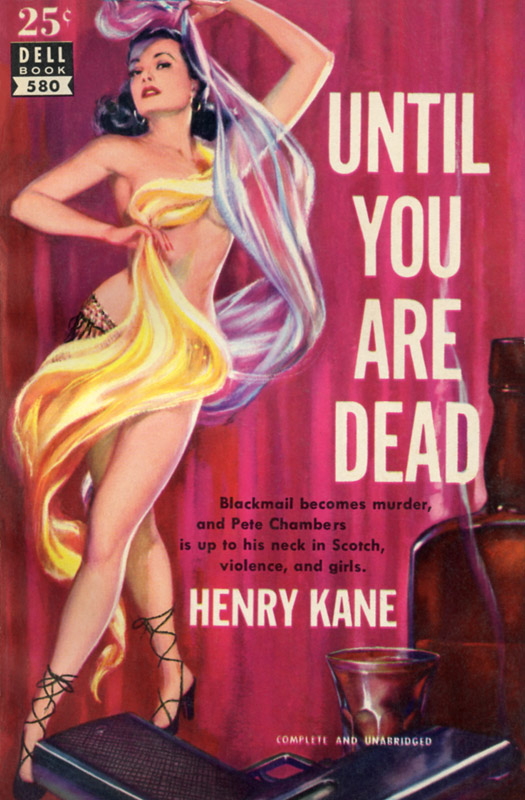 “She doesn’t enjoy sex?”
“She doesn’t enjoy sex?”
“Au contraire, mon frère Henri. She loves it. Can’t get enough of it.”
“Then—”
“She only wants one thing,” the friend confided, “and she doesn’t want it to end. She wants to be—how shall I put this?—the pièce de résistance at the banquet.”
“Oh.”
“Not that she’s not a suitable object for that sort of veneration,” he said. “But one doesn’t want to spend hours on end kneeling in homage, as it were.”
“Hours, eh?”
Henry mulled this new nugget of information, and in the course of the next several days he made two phone calls. The first was to his friend Gordon.
“There’s a woman I think you’d really enjoy,” he said. “Her name’s Lorraine. She’s a few years older than you, but I don’t see why that should be a problem. Why don’t you give her a call, see if the two of you hit it off?”
The second call was to Lorraine, whom he didn’t know as well as he knew Gordon, but whom he’d met a few times and felt comfortable calling. “There’s a fellow I know named Gordon,” he told her, “and I think he’s going to call you for a date. I have a strong hunch the two of you would be good together, so why don’t you give it a shot and see how it goes?”
And that, said Henry Kane to me, perhaps ten years after those phone calls, is how Gary Morton met Lucille Ball.
I know, I know. It’s an outrageous story. And there’s no way to confirm it. Wikipedia tells us that the two met while Ball was rehearsing Wildcat prior to its Broadway opening, and that a fellow cast member introduced the two of them. And maybe that’s what happened, and maybe it’s not.
The principals themselves are long gone—I wouldn’t dream of recounting the story otherwise—and we’re free to believe it or not, as we prefer. I figure it’s true, but maybe that’s just because I want it to be true. I’ll tell you, it adds a certain something to watching reruns of I Love Lucy.
Toward the end of our acquaintance, Henry Kane wrote a novel with some sort of espionage element in it. A hardcover house contracted to publish it, and then Something Went Wrong. Someone from one of the intelligence agencies visited Kane’s publisher, and the book essentially disappeared.
Now it seems to me that there was once a time when I knew the book’s title, and I may even have read it, but on this point my memory is spotty and not to be trusted. I think the book was actually published, but can’t even be certain of that. What I do recall is that Kane was desperate to know who was responsible for its suppression, and why, and so on. And he couldn’t figure out how to learn what he wanted to know.
I suggested he ask himself what his detective, Peter Chambers, would do in such a situation. Or another character, ex-Inspector MacGregor. Figure out who they’d call, and what they’d say, and how they’d solve the puzzle, and then do just that.
I don’t think he could see what I was getting at. The characters he wrote could operate in that world, and do so with great panache, but he couldn’t even put himself into it in his imagination. He went on railing at Fate, and never did learn who’d put the kibosh on his book, or why.
 Toward the end, Henry Kane published a series of erotic suspense novels for Lancer, with titles like The Shack Job, The Glow Job, The Escort Job, and The Tail Job. I think he ghosted at least one Ellery Queen paperback, and his last novel seems to be The Little Red Phone, published in 1982.
Toward the end, Henry Kane published a series of erotic suspense novels for Lancer, with titles like The Shack Job, The Glow Job, The Escort Job, and The Tail Job. I think he ghosted at least one Ellery Queen paperback, and his last novel seems to be The Little Red Phone, published in 1982.
It must have been sometime in the early ’80s that he died. I had lost track of him by then, and had changed agents myself, so he was long gone by the time I had word of his death. And I’ll be damned if I can find out when it was that he died.
Henry Morrison doesn’t remember. “All I know is it was a really long time ago,” he told me recently. He added that Kane’s widow had since died, and that their daughter had moved and his attempts to contact her had been unsuccessful.
I got in touch with a woman I’d met through Kane, an old girlfriend of his, but she, too, had long-since lost touch with him. She couldn’t furnish his date of death, and while she was at it she cast doubt on his official date of birth; she figured he wasn’t above taking off a few years, and that he was most likely born not in 1918 but in 1908. And she put me in touch with another old girlfriend of Henry’s, with whom I had a perfectly lovely conversation, but she didn’t know when he died, either.
You’d think in this age of Google that anybody’s date of death would be instantly available, but it’ll take someone handier than I with a computer to find it.
But it’s pretty clear that he’s gone, and I guess somebody said Kaddish for him. I haven’t heard any footsteps.
A Selected Henry Kane Reading List
Peter Chambers Novels
A Halo for Nobody (1947)
Armchair in Hell (1948)
Hang by Your Neck (1949)
A Corpse for Christmas (1951)
Until You Are Dead (1951)
My Business Is Murder (1954)
Too French and Too Deadly (1955)
Who Killed Sweet Sue? (1956)
Fistful of Death (1958)
Death Is the Last Lover (1959)
Death of a Flack (1961)
Dead in Bed (1961)
Death of a Hooker (1961)
Kisses of Death (1962)
Death of a Dastard (1962)
Never Give a Millionaire an Even Break (1963)
Nobody Loves a Loser (1963)
Snatch an Eye (1963)
The Devil to Pay (1963)
Unholy Trio (1967)
Don’t Call Me Madame (1969)
The Shack Job (1969)
The Bomb Job (1970)
Don’t Go Away Dead (1970)
The Glow Job (1971)
The Tail Job (1971)
Come Kill With Me (1972)
The Escort Job (1972)
Kill for the Millions (1972)
“Inspector” McGregor Novels
The Midnight Man (1965)
Conceal and Disguise (1966)
Laughter in the Alehouse (1968)
Marla Trent Novels
Private Eyeful (1959)
Kisses of Death (1962)
Standalone Novels
Edge of Panic (1950)
Laughter Came Screaming (1953)
The Deadly Finger (1957)
Death for Sale (1957)
Run for Doom (1960)
The Crumpled Cup (1961)
My Darling Evangeline (1961)
Two Must Die (1963)
Dirty Gertie (1963)
Frenzy of Evil (1963)
The Virility Factor (1971)
The Moonlighter (1971)
Decision (1973)
A Kind of Rape (1974)
The Violator (1974)
The Avenger (1975)
Lust of Power (1975)
The Tripoli Documents (1976)
The Little Red Phone (1982)
This article first appeared in Mystery Scene Summer Issue #115.
 Sharon Short
Sharon Short By the time I’d written several adventures for Josie, however, I realized it was time to address her relationships with her parents in particular and her family of origin in general. A Thanksgiving setting seemed perfect for that, since it’s the quintessential family holiday in the U.S. I wanted to see how Josie would deal with suddenly being thrust into a large family with whom she was mainly unacquainted.
By the time I’d written several adventures for Josie, however, I realized it was time to address her relationships with her parents in particular and her family of origin in general. A Thanksgiving setting seemed perfect for that, since it’s the quintessential family holiday in the U.S. I wanted to see how Josie would deal with suddenly being thrust into a large family with whom she was mainly unacquainted.
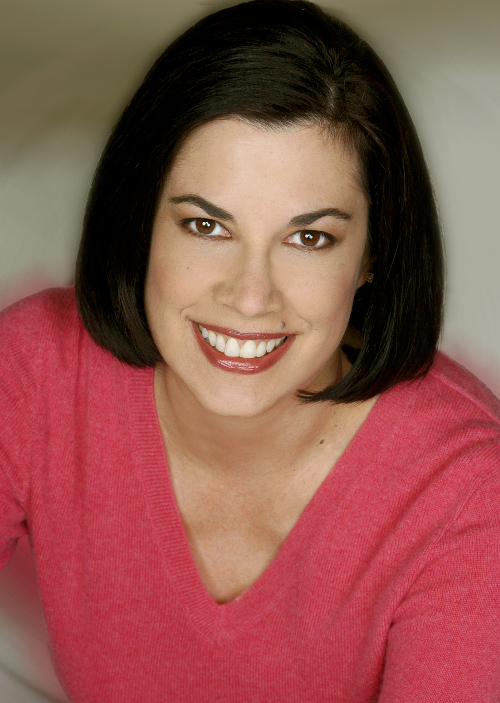 Nancy J. Cohen's spirited research yields results
Nancy J. Cohen's spirited research yields results
 Alina Adams' inglorious blades
Alina Adams' inglorious blades
 Robert Lopresti
Robert Lopresti
 Joyce Krieg
Joyce Krieg
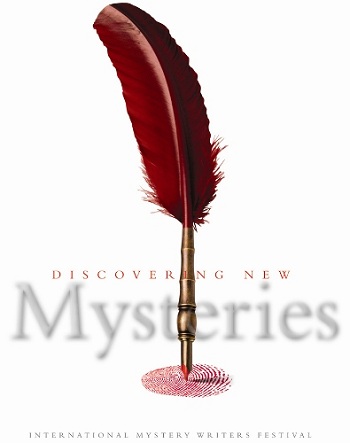
 Television networks—especially cable networks—are discovering that crime fiction is a gold mine for involving stories. We readers have known that for a long time; the networks should have checked with us years ago!
Television networks—especially cable networks—are discovering that crime fiction is a gold mine for involving stories. We readers have known that for a long time; the networks should have checked with us years ago!
 It also became a refuge for white women fleeing from abusive homes from all over the state. Even the most abusive, nastiest husbands weren't stupid enough to try to venture into Coe Ridge to find their wives.
It also became a refuge for white women fleeing from abusive homes from all over the state. Even the most abusive, nastiest husbands weren't stupid enough to try to venture into Coe Ridge to find their wives. 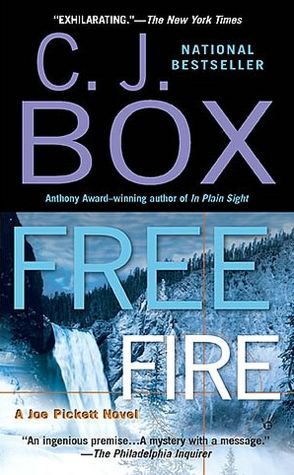



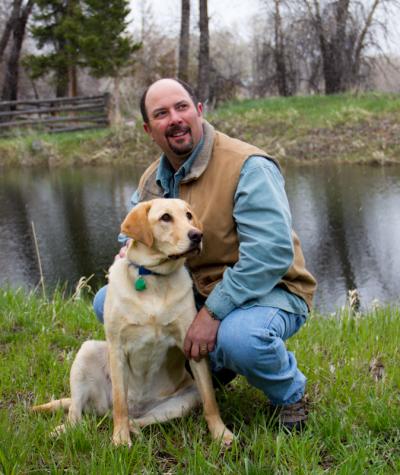 Although Box isn’t done with Pickett just yet, he still finds time to pursue other projects. For instance, there’s his short fiction, an example of which, “Pirates of Yellowstone,” appears in the prestigious The Best American Mystery Stories 2006. Readers can also expect a non-Pickett book next year. “Blue Heaven will be out in January of 2008,” said Box. “It’s a standalone thriller set in North Idaho—60 hours told in real-time from six different points of view.
Although Box isn’t done with Pickett just yet, he still finds time to pursue other projects. For instance, there’s his short fiction, an example of which, “Pirates of Yellowstone,” appears in the prestigious The Best American Mystery Stories 2006. Readers can also expect a non-Pickett book next year. “Blue Heaven will be out in January of 2008,” said Box. “It’s a standalone thriller set in North Idaho—60 hours told in real-time from six different points of view.

 Mr. Coben’s Neighborhood
Mr. Coben’s Neighborhood
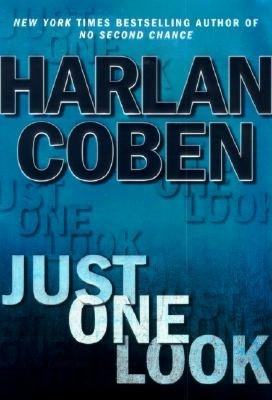

 Pavone's playground inspiration
Pavone's playground inspiration This was not a life I’d lived before. Neither the expat part (except for college, I’d lived all my life in New York City) nor the stay-at-home-parent part. I didn’t know how to handle—how to entertain, cajole, discipline, and feed—our four-year-old twins for all those hours, all those months on end. It took me a few weeks to figure out how to throw away the garbage (an obscure door in a subterranean garage labeled poubelles), and a similar length of time to realize that the tiny washing machine (whose settings and instructions were in German) was also a tiny dryer. What the hell?
This was not a life I’d lived before. Neither the expat part (except for college, I’d lived all my life in New York City) nor the stay-at-home-parent part. I didn’t know how to handle—how to entertain, cajole, discipline, and feed—our four-year-old twins for all those hours, all those months on end. It took me a few weeks to figure out how to throw away the garbage (an obscure door in a subterranean garage labeled poubelles), and a similar length of time to realize that the tiny washing machine (whose settings and instructions were in German) was also a tiny dryer. What the hell? The action revolved around a close-knit group of expat moms, and their different versions of this predicament. This was becoming a rather quiet, domestic book; maybe too quiet. So I decided to make the plot much less straightforward, the whole tone much more urgent. I ditched the group-of-friends milieu, and replaced it with an espionage element.
The action revolved around a close-knit group of expat moms, and their different versions of this predicament. This was becoming a rather quiet, domestic book; maybe too quiet. So I decided to make the plot much less straightforward, the whole tone much more urgent. I ditched the group-of-friends milieu, and replaced it with an espionage element.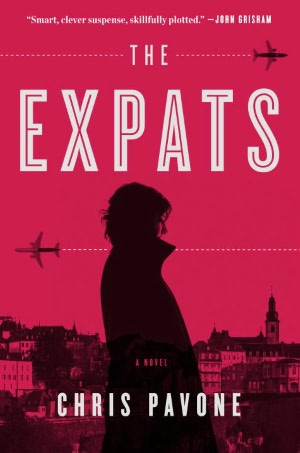 Pavone's playground inspiration.
Pavone's playground inspiration.

 Sue Grafton
Sue Grafton

 Uh, don’t try this at home.
Uh, don’t try this at home. “And if I do that?”
“And if I do that?” “She doesn’t enjoy sex?”
“She doesn’t enjoy sex?” Toward the end, Henry Kane published a series of erotic suspense novels for Lancer, with titles like The Shack Job, The Glow Job, The Escort Job, and The Tail Job. I think he ghosted at least one Ellery Queen paperback, and his last novel seems to be The Little Red Phone, published in 1982.
Toward the end, Henry Kane published a series of erotic suspense novels for Lancer, with titles like The Shack Job, The Glow Job, The Escort Job, and The Tail Job. I think he ghosted at least one Ellery Queen paperback, and his last novel seems to be The Little Red Phone, published in 1982. Scotch, smokes, pills, and women—fuel for the urbane stories of Henry Kane.
Scotch, smokes, pills, and women—fuel for the urbane stories of Henry Kane.


 Ike Evans (Jeffrey Dean Morgan, Grey's Anatomy) is a good man, devoted to his three children and his lovely second wife, Vera (Olga Kurylenko) and to his glamorous the Miramar Playa hotel.
Ike Evans (Jeffrey Dean Morgan, Grey's Anatomy) is a good man, devoted to his three children and his lovely second wife, Vera (Olga Kurylenko) and to his glamorous the Miramar Playa hotel. 
 Steve Brewer goes (farther) west
Steve Brewer goes (farther) west
 John Galligan meets his Dog
John Galligan meets his Dog

